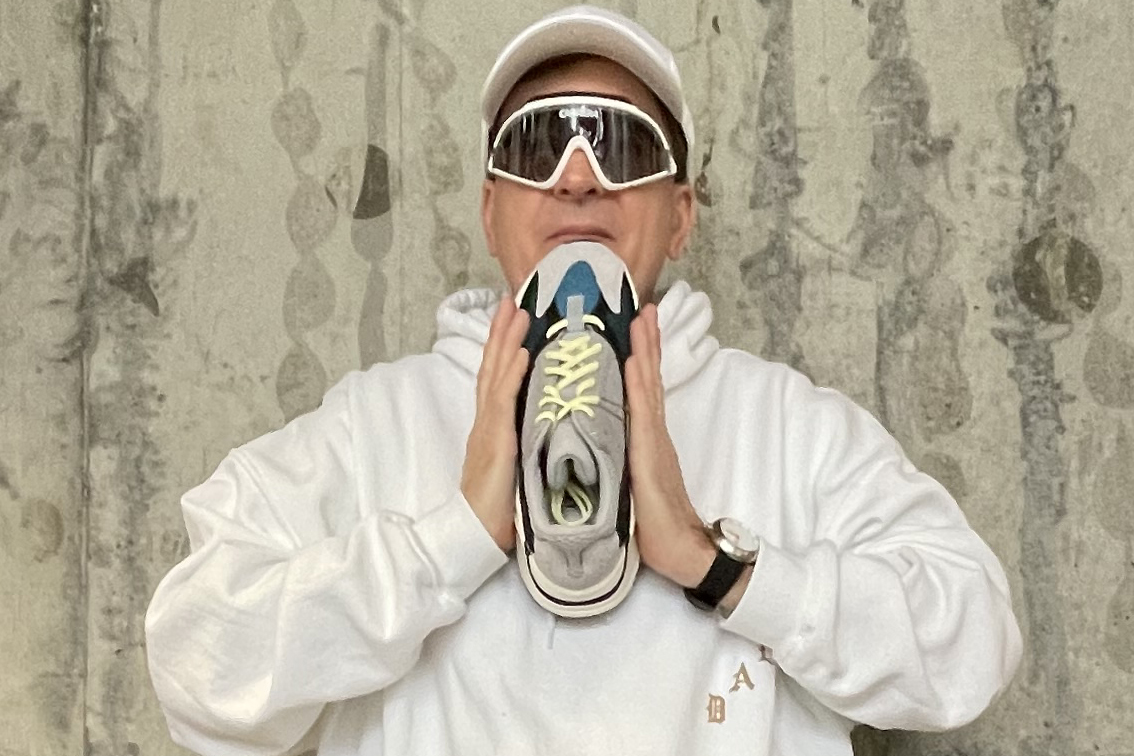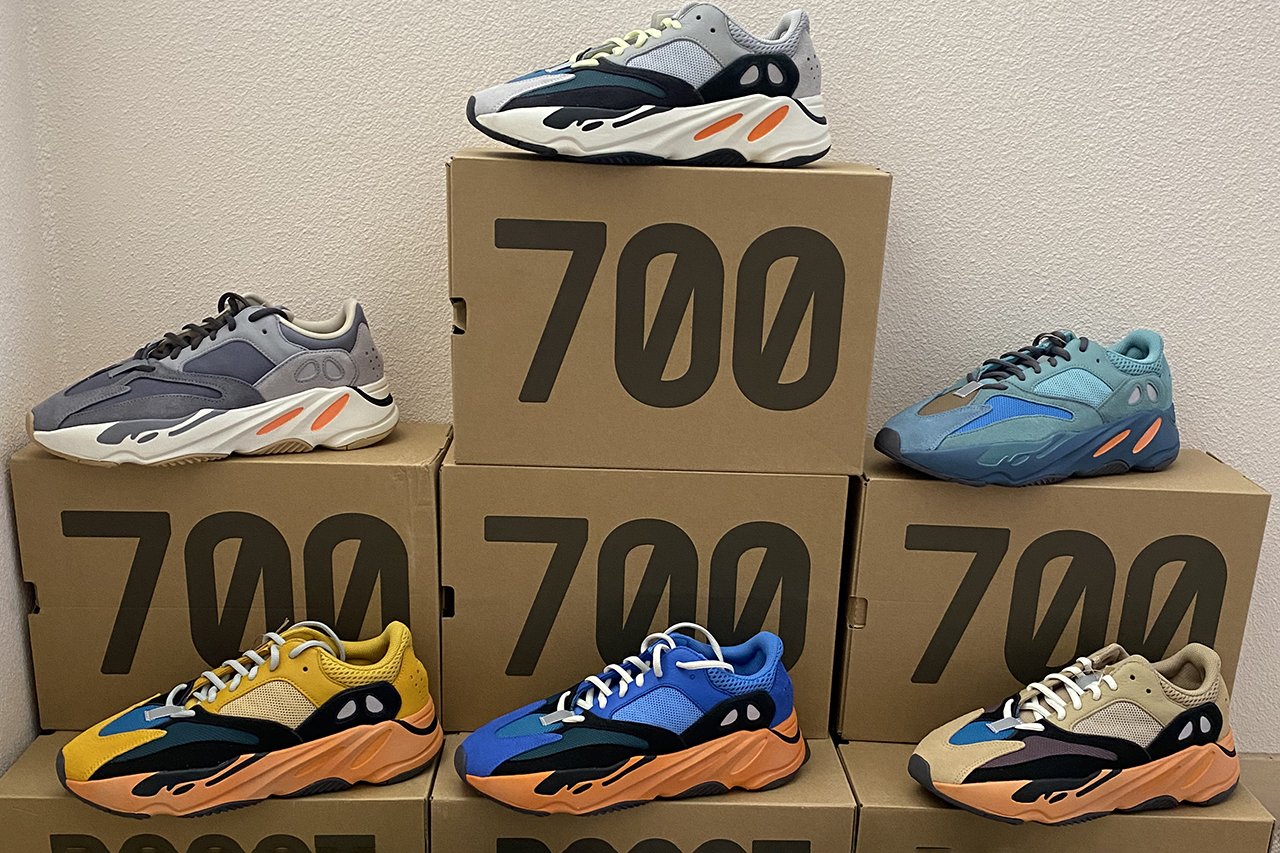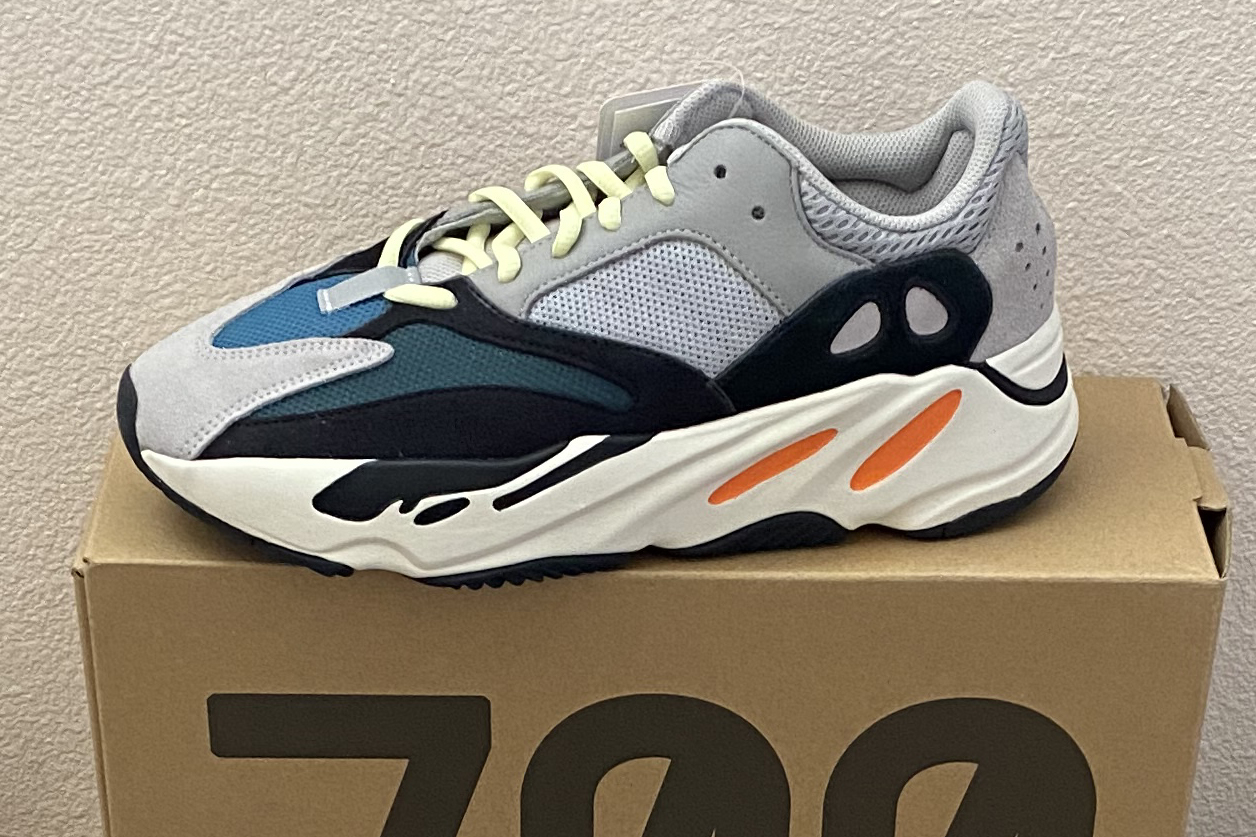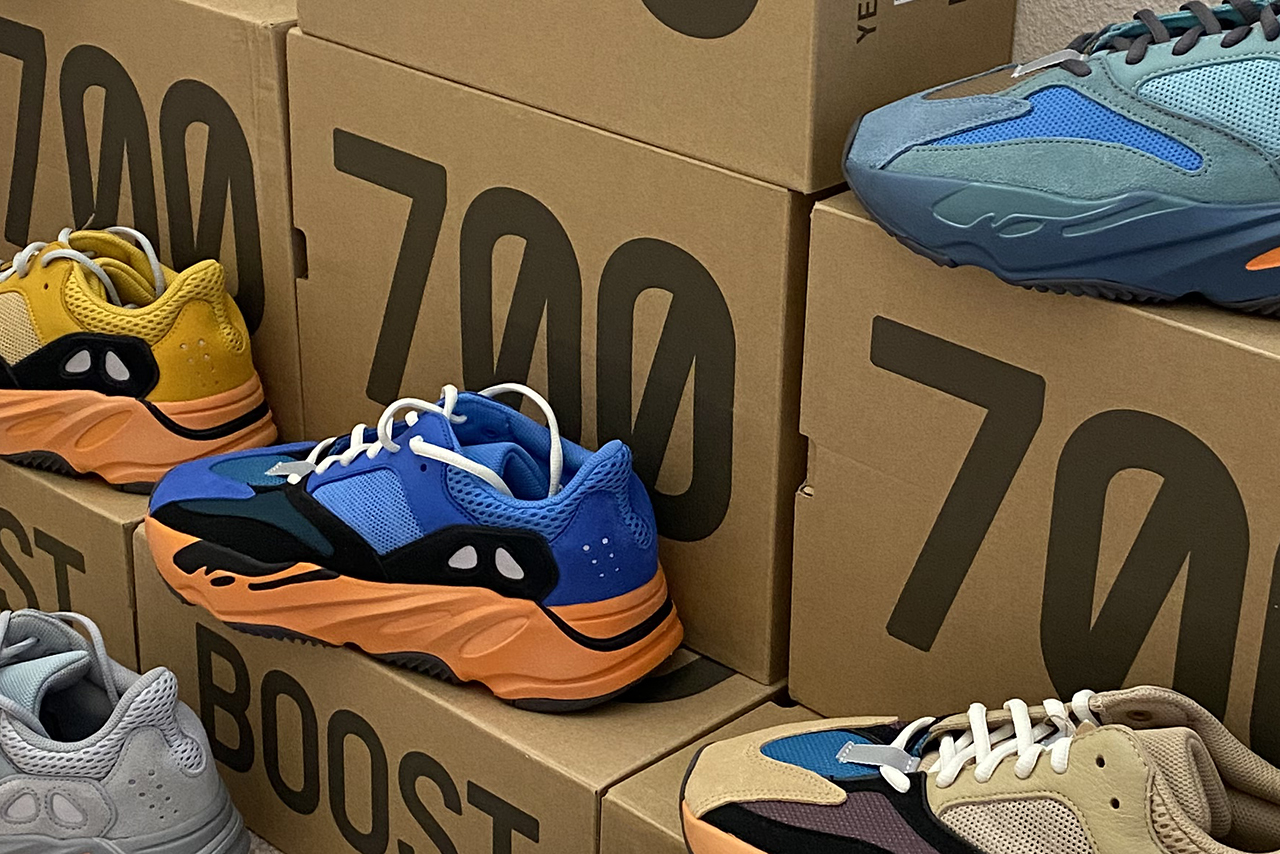What happens when you take one of the greatest sneaker designers of all time and link them with the vision and mindset of Kanye West? You get YEEZY with Steven Smith at the reins, producing some of the best-known shoes in today’s climate.
Smith has shaped the scene for over 37 years through his work at New Balance, Nike, adidas, Reebok, YEEZY and elsewhere. He is colloquially known as the “Godfather of Dad Shoes” as he created many New Balance styles that are still firm favorites today, such as the 574, 997 and 1500, but he’s also the man behind Reebok’s Instapump Fury.
This combination has led him to work alongside Ye at YEEZY, and since 2016 he has created now-iconic and scene-shifting pairs such as the YEEZY BOOST 700 “Wave Runner” as well as the V2 and V3 styles that followed, and even the divisive YEEZY 450.
That word – divisive – perfectly encapsulates Smith’s design ethos. When the Instapump Fury came out in 1994 it split opinions and it still does to this day. The “Wave Runner” was a change of direction for YEEZY in 2017 – “when teasers were shown… people were like ‘what is Kanye doing?’,” says Smith in his interview with HYPEBEAST for this installment of Sole Mates.
Smith dictates industry trends. He calls himself a “provocateur,” and rightly so given his body of successful releases at YEEZY. Now, he speaks to HYPEBEAST about his favorite sneaker – the YEEZY BOOST 700 “Wave Runner” – as well as how he got started, what it’s like to work with Kanye, and what the future holds for both him and the YEEZY brand.
Christian Tresser
HYPEBEAST: What got you into sneakers?
Steven Smith: I was a sneakerhead before there was a label for such a thing. Right up until college I kept every pair, even when I outgrew them because I had favorites that I loved. I was also a runner, and that turned out to be a sport that I enjoyed. Once I graduated from design university, New Balance was hiring for its second or third-ever full-time designer and I got hired. It made total sense; I got to design products I believed in because I ran, it was a natural fit for a runner and a sneaker geek. That was a pretty exciting entry – and I needed a job.
How did working at New Balance in 1986 prepare you for the career ahead?
The industry was evolving so fast, the technologies were coming into play and the competition was starting to grow between brands. Prior to then, everything was kind of regional – Saucony was in Pennsylvania, Nike in the West Coast up in Oregon, you had New Balance in New England and ASICS in California, so it wasn’t truly national before that. When I got in the game things started to change rapidly. We went from cut-and-buff midsoles to being able to cast a midsole or cast polyurethane. Coming right out of school as a trained industrial designer and not a shoemaker, as there was no such thing, I had to learn on the fly from old pattern makers and shoemakers at New Balance [within the] old world of shoemaking.
As a good product designer should, I learned all the materials and processes and then explored how to make it better. I learned pattern making and shoemaking and how to make my own sneakers from the sample room in the factory. That was a huge advantage with New Balance in particular because the factory was right downstairs. If I wanted to see how something was done I could go downstairs and see it in production.
“There are a lot of designers who can make things different but not necessarily better.”
All of those things combined – as well as being a runner as you could run in prototypes right away and get direct feedback – [allowed us] to change the shoe right there. It was instantaneous.
As a designer, it completely altered my thought process on sneakers and it drove me to always make things better, not just different. There are a lot of designers who can make things different but not necessarily better. In those days because everything moved so fast the shoes were getting better, so that drove me to up the game. That was always the driving force: how can we make it better?
Christian Tresser
What does it feel like to look back at a legacy of iconic shoes like the New Balance 574 and the Reebok Instapump Fury?
It’s pretty crazy. I was just a goofy kid from southern Massachusetts that liked to run and loved stuff. It was cool to have a career where I’d design stuff. I never sat down and said, “today, I am going to create the iconic running shoe for this company.” I would sit down and create the best product that I could at that moment in time with the tools and DNA of that particular brand. It shows that the path that I chose was the right one because these things will outlive me.
I love going to Japan because I can go to a sneakerhead store and I don’t need to travel with a portfolio, you can just look at the wall and see my entire career. Over 37 years later, it’s pretty mindblowing, I never expected these things to live this long and be rediscovered, it’s amazing, a lot of them sell more now than they did when they were new.
When we were creating these things people were suspicious of them. To me, it’s satisfying because the stuff I did, the designs, were right. There aren’t a lot of people who have this experience, it’s probably just me and Tinker Hatfield.
Fast-forwarding to today, how did the opportunity to work at YEEZY come about?
It was really weird. I had worked at Nike and adidas before, and I was working for a smaller company but it wasn’t what I wanted so I literally just walked out one day – “I’m done with this.” Two weeks later, one night out of the blue the phone rang and it was Ye. He said he knew all the designs I had done and would love for me to come to talk. A week later I was working with Ye, and out of it came magic and magic still comes. What we’ve done together has broken sales records and has become instant icons – you don’t set out to make icons, we sit down and create what we can and they naturally become that.
Christian Tresser
What is the creative process like?
I think Kanye trusts me the most because of the way I am, the hunter-gatherer mentality. I soak it up and become a co-conspirator with him on what YEEZY is and what it represents, and it just flows. Sometimes I’ll have an idea or he’ll have an idea and we share inspiration and information back and forth, something just gels and I’ll go to the workshop and make it on the fly sometimes. We have a conversation and out of it comes these magical things. Some of it’s digital, some of it’s manual, all of it involves craft and skill.
Why did you choose to spotlight the YEEZY BOOST 700 “Wave Runner” for your issue of Sole Mates?
It was the first shoe that I did with Kanye. There were a lot of people who doubted it or didn’t understand it. It was not where the market was at. But at that point, you realize you are the market driver or changer, so when we were working on it everything else was simple, maximized for profit, but we came out with something made from a million pieces, all stitched.
“You have to think like The Matrix and break the system, shift the paradigm, and I know they’re buzzwords but that’s kind of what we did.”
When it came out it was futuristic, you didn’t know which era it was from, it could be from the future, today, or yesterday, who knows? We created this instantly timeless icon with points of reference to the past, present and future. Time is a construct of man, it passes and it goes, but at some point we have these conversations of “did I see the future 20 years ago?” It just manifested itself. You have to think like The Matrix and break the system, shift the paradigm, and I know they’re buzzwords but that’s kind of what we did. We redefined the entire direction for the industry and everyone jumped on – everyone and their brother did a “dad shoe.” Prior to working with Kanye, [the industry] coined the nickname for me “The Godfather of Dad Shoes,” which I thought was pretty funny.
The YEEZY BOOST 700 “Wave Runner” sold out in a matter of minutes which was funny because people were [initially] like “what is Kanye doing?” when teasers were shown. But you look at that shoe and it goes with anything, you see all these outfits kids put together and the range and scope of the fits are mindblowing – it goes with just about anything.
[After the release], Kanye said to me, “I made you design your New Balance shoe as if you worked there 30 years later.” I said, “pretty much, you did.”
Christian Tresser
The YEEZY BOOST 700 changed the footwear scene’s direction – but how important was it for YEEZY to steer away from what it knew, like the 350?
It broke the rules of what a YEEZY is. There was a certain language that YEEZY was being pigeonholed into and we did something completely different. That prepared people for what came after and is still coming, it’ll be like nothing you’ve ever seen, it’s total creativity.
What has YEEZY done for the sneaker industry and culture?
I think it’s huge. There were early outbreaks of brands and people that hybridized lifestyle and sport, if you look back at Sean John, Karl Kani, some of those things embraced sport with the warmups combined with footwear, but not always necessarily the total package. Kanye reset the industry [by giving] the total package, the look head-to-toe. Brands have tried it, adidas and Nike, it has to be rooted in sport as this is their DNA, but we’re not held to that. I naturally integrate a sports DNA into the things that we create.
“I share Kanye’s art, his visions, in some ways I am the eyes and hands for him.”
I think like a lot of things Kanye has broken down barriers and redefined things and I think we were critical in doing that, showing that you could make a powerhouse brand that is ‘Ye. It’s interesting to see the people in his influence and to be a part of that is pretty amazing.
Christian Tresser
Personally, how will you continue to shape the future of the industry?
I think my role evolves daily and I want to design cool sh*t. I’m good at designing cool sh*t that people like and want. I think that’s always the key feature – you can design a lot of stuff, but if it’s truly for yourself you’re an artist, not a product designer. A product designer designs products for other people, and to me, there’s still the artist involved but I’m able to share my art. I share Kanye’s art, his visions, in some ways I am the eyes and hands for him. Continuing on that path is good.
One of the reasons why the “Wave Runner” is so important to me is that stick in the eye to Nike for thinking, even daring to think, that some of us were used-up, old, tired designers. Kanye and I ended up having a really good relationship above and beyond the design side of things, we’re mentally similar in that we’re provocateurs. You can do mainstream products and that’s fine, you can make money all day making a Ford Escort, but the world needs somebody to make the Lamborghinis that really shake things up and make people say “What is that!” That’s been one of my goals and I will continue to be the provocateur much like my partner in crime.
Source: Read Full Article







